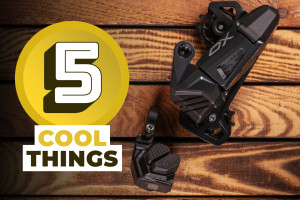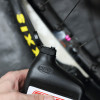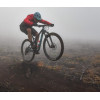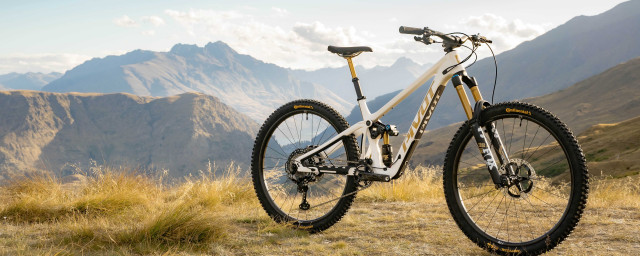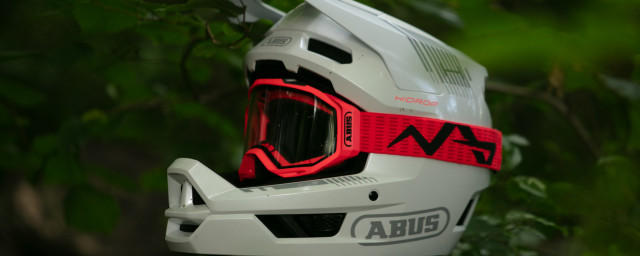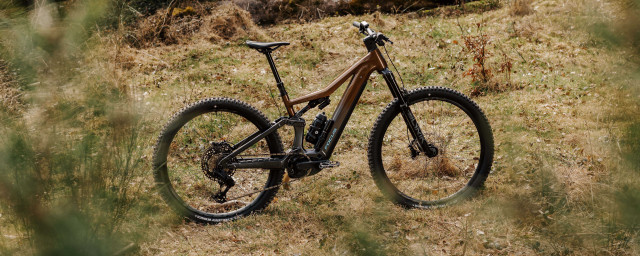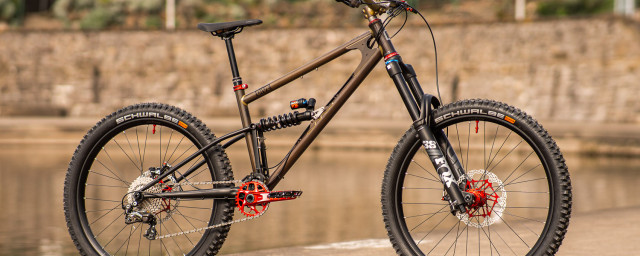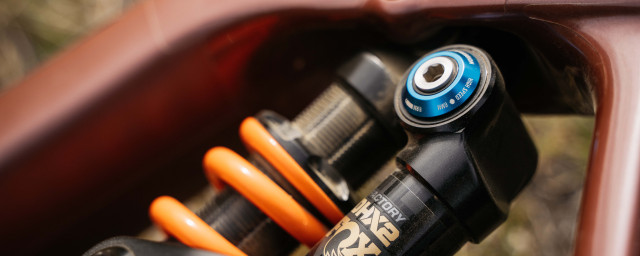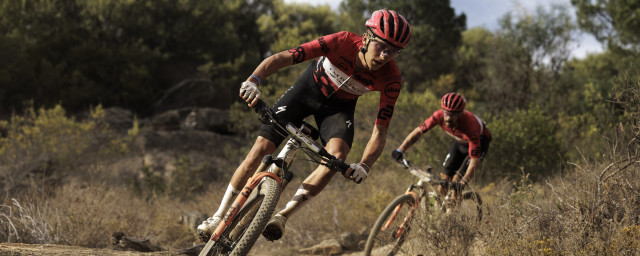Training for your first MTB stage race and the importance of a power meter

[Sponsored content]
Digital training aids have revolutionised race preparation for the committed amateur mountain biker. Weekend warriors once had to keep paper notes and logbooks while guesstimating how ‘strong’ they were feeling during a training ride. However, affordable and user-friendly pedal power meters can transform your training.
Once the preserve of pro teams, the democratisation of power meter technology has given all riders access to the most critical data point: their power output. It’s the foundation for calculating athletic potential and helps to structure all your training around concepts like FTP and zones. Think of the data harvested by your power meter in the same way as tyre pressure: the margins matter. With accurate data, you can get your set-up as close as possible to peak performance, maximising the potential of rider and bike to perform to the potential.
Italian electronics and cycling performance specialist, Favero Electronics, has developed a pedal power meter for more robust off-road applications like mountain and gravel bike stage racing. The pedals can monitor attributes such as power, cadence, power phase, torque efficiency, pedal smoothness, left/right power balance, rider position, and platform-centre offset.
But how should you integrate a pedal power meter to enhance your training for that mountain bike stage race and optimise your strategy during it?
Find your FTP
This is the number on which you build your stage race training. The FTP acronym unpacks as Functional Threshold Power, representing the highest average power you can produce and hold for an hour, expressed in watts.
Without FTP, you can’t structure scientific and reliable training zones. Without an accurate pedal power meter, you can’t generate data to establish FTP.
FTP tests once involved an expensive sports laboratory consultation and suffering away on a static bike for an hour or more. But with a pedal power meter, you can get out on your local training routes and, in 20 minutes, have your FTP. Choose a route segment or section with a slight incline to ensure optimal muscle recruitment and ride at full effort for 20 minutes.
You can use a cycling head unit to log the data, but there’s the risk of forgetting to trigger the 20-minute segments perfectly when you are exhausted and slightly disorientated. Trusted cycling trainer apps like Strava, Intervals.icu or TrainingPeaks are foolproof and recommended for logging your 20-minute FTP test rides. Use 95% of your average power produced during the 20-minute full effort ride as a reference FTP.
Working out in the zone
Having an established FTP unlocks the world of training zones, which are crucial to periodisation and getting the best balance of stimulation and recovery in your training.
These zones are numbered and correspond to intensity. They guide your training and ensure you work efficiently without risking injury or ruining your recovery. Training zones help remove subjective ‘feel’ and ego from your training, making it scientific. You can’t do zones without the real-time data guidance your pedal power meters provide.
Riding in the right zone
The six-tier zonal training matrix is most popular with riders, covering all aspects you need for stage racing – from recovery to VO2 max riding.
Zone 1 is your active recovery riding, at less than 55% of FTP. Zone 2 is for endurance riding, requiring you to generate between 55-75% of FTP, for up to three hours. The tempo or ‘sweetspot’ phase is Zone 3, operating at 76-90% FTP, for between 20- to 60 minutes. Zone 4 is for threshold riding, at 91-105% FTP effort, for 10- to 30 minutes.
Then there are the two zones all riders dread and respect. Zone 5 is VO2 max, running at 106-120% FTP, for 3- to 8 minutes, and zone 6 is anaerobic capacity, which needs you to exceed 121% of FTP, for 30 seconds to 3 minutes.
A properly structured and scientific training programme will use zones to create the most harmonised training experience for you. Helping to develop all the stage race performance metrics you need, from having the endurance to ride consecutive days at race pace to the surges in performance to pass rivals on brutal climbs with short bursts of power.
Without a pedal power meter to give you real-time data awareness of where you are regarding FTP, and zones to structure your efforts, your risk of overtraining and underperforming is real.
Power meters and race pacing
It’s called a stage race for a reason and even the mildest-mannered mountain bikers get competitive when timing chips or tags are involved. Allowing the red mist to cloud your judgement and strategy during a stage race can be disastrous. When in doubt, always trust the numbers and let your pedal power meter data set the limits for your effort.
With the insights provided by your pedal power meter, you can use zones to pace yourself. Conserving energy and performance where needed, and deploying your maximum sustainable effort for those daring overtaking moves on appropriate sections of trail. Every stage race, in effect, becomes a race within itself, with smaller groups of similarly matched riders competing. If you go too hard at the beginning or try to chase down much stronger riders, all you’ll do is burn all your matches and have nothing left in reserve.
Using the zones, you can match your performance potential to elevation and terrain. Without using zones to pace yourself, you risk racing anyone and everyone, and that’s a sure way to exceed your resources of energy and endurance.
With the pedal power meter, you know exactly how long you can sustain a specific peak zone 5 or 6 effort. The pedal power meter is your in-race coach, letting you know exactly where you are in your zonal matrix, and if you are about to exceed the tipping point between threshold and sustained effort.
Robust design makes for reliable power meter tech
Power meter data is invaluable for establishing FTP and policing your training zones. But unlike road riding, pedal-based power meters are exposed to a lot more risk of damage during mountain bike training and stage races.
You could strike a pedal on a descent, against a rock or root, or even suffer a terrain strike while climbing a technical bit of singletrack. Then there’s the exposure to muddy trails and water, with river crossings, where the power meter’s hardware (strain gauges, signalling sensors and battery) risk moisture ingress.
The Assioma Pro MX-2 take all the knowledge Favero has gained from its road racing components and evolves it into a robust mountain and gravel bike pedal configuration. Packaging the tech capable of sensing and signalling your real-time power output data into a stainless steel pedal spindle requires meticulous design. The rechargeable battery is also stored inside the spindle – this helps prevent possible power dropouts thanks to the total absence of external electrical contacts.
It’s a lot of tech in the compact form factor of a pedal’s structure, and Favero’s done it while retaining the feel of a conventional clipless mountain bike pedal.
Creating a durable power medal pedal requires excellent engineering and product assembly. The pedals are 100% SPD compatible, which provides smooth clipping in and out, not to mention impressive mudshedding capabilities, too. Furthermore, the Assioma Pro MX range features IP67-grade environmental sealing. This means you never have to get anxious training in the zone on muddy trails or crossing some water during a stage race.
For all the sophisticated functionality of their power metering, robust build quality and environmental sealing, the Assioma Pro MX-2 power meter pedals are wonderfully light. Pedal grams always matter to racers, because it’s rotational weight, and these pedals are only 191g each.
Having put this pedal to the test through our rigorous testing protocol, we can confidently say the data provided by the Assioma Pro MX-2 pedals are constant and reliable, regardless of the ambient temperature. It does this via ATC (Automatic Temperature Compensation), which compensates for any temperature variation between -10- and +60-degrees.
They work superbly outdoors and indoors, the latter of which allows you to train in a controlled environment such as Zwift. The best part about the pedals is the split approach in its design – the spindle and pedal body are independent elements. The electronic innards and battery are safely housed and protected from water, dust and mud, ensuring total waterproofing and protection. Should the need arise, the pedal body, thanks to its electronicless feature, can be replaced without problems.
